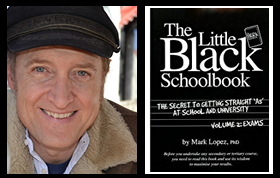Dr Mark’s The Meaning in a Nutshell
Margaret Atwood, Cat’s Eye (1988)
Margaret Atwood’s Cat’s Eye (1988) is a semi-autobiographical novel that presents her theoretically-informed reflections on the meaning and significance of the events experienced by a woman, Elaine Risley, as she grows from childhood to middle-aged maturity in Canada in the late twentieth century. Much of the story is told in flashbacks that are reflected upon from the perspectives of feminist theories of socialisation and Freudian psychanalysis.
The novel is particularly influenced by feminist theories of socialisation regarding the social forces that impose gender roles and gender identities on individuals who would, if put in other situations or exposed to other stimuli, have developed differently. Cat’s Eye invites its readers to reflect upon the impact of socialising forces in creating the individuals who we become, or in creating the people whom we encounter. Cat’s Eye also invites its readers to reflect on the merits of these socialising forces in either fulfilling or suppressing natural tendencies in identity formation.
In addition to feminist theories of socialisation, Freudian notions of the significance of childhood experiences, especially traumatic experiences, on shaping the personality of the adult are explored in detail. The childhood experiences that are highlighted in the novel are of the kind that would be of most interest to a practitioner of Freudian psychoanalysis, such as the long-term impact of childhood bullying. And, as is the case regarding the application of Freudian psychoanalysis to treat a psychological problem, the patient is considered cured when he or she eventually comes to understand the source of his or her trauma, as is evident when Elaine Risley comes to terms with the impact of the childhood bully Cordelia on her life.
Although Cat’s Eye depicts events, the territory that the novel inhabits and explores deeply is the narrator’s mind. Readers are given an intimate insight into the thoughts and feelings of a maturing female. These thoughts and feelings are revealed with a disarming frankness that seems intended to lend to the text additional credibility in its coverage of Freudian psychological concepts.
Cat’s Eye is a novel about memory and reflection and how the process of thought allows the past to become part of the present by being the focus of current thought. The cat’s eye marble referred to in the novel is a metaphor for memory, in that the glass marble refracts and bends light, as memory is conceptualised to refract and bend time. The novel suggests that, in memory, the past and present can exist simultaneously. This concept is used by Atwood to establish the psychological context in which the novel takes place.
Cat’s Eye also seeks to chronicle the wider ideological, political, social and cultural changes that dramatically transformed Canada, and other Western societies, in the second half of the twentieth century. While doing so, Atwood favourably depicts the rise of the New Left and hippy counter-culture from the 1960s onwards, presenting it as progressive and liberating. This is the social movement that produced and promoted the ideologies and values that are currently understood as political correctness. Throughout the novel, what Atwood believes to be the liberating ideologies and values of the Left are frequently contrasted with what she believes to be the inhibiting ideologies and values of the Right.
The ideologies and values associated with political correctness that are presented to seem attractive to readers are: multi-ethnic immigration, ethnic and cultural diversity and multiculturalism; beatnik and hippy lifestyles and the bohemianism of the art scene, which includes values like informality, free love, and unconventional romantic relationships; pacifism and opposition to the Vietnam war; feminism; and environmentalism. The novel also reflects the fascination of many on the politically correct Left with the media, literature and the arts.
Meanwhile, the non-Left ideologies and values that are presented as oppressive or hypocritical and as unworthy of the support of readers include: social conservatism and conformity to the mainstream social norms of the 1950s, the suburban lifestyle; devout religious practice; patriotism and nationalism; imperialism, support for the British Empire and respect for the monarchy.
Although Margaret Atwood is profoundly influenced by feminism, and her reflections on life are underpinned by feminist social theory, in the novel she carefully and subtly distances herself from the more extreme or inflexible feminist positions that could be perceived as anti-male. Atwood is as sensitive to the impact of socialising forces on males as she is on females, and many male characters are treated sympathetically, such as Elaine Risley’s brother. In addition, her frank discussions of female sexual desire diverge from the feminist ‘party line’ when she celebrates the aphrodisiac effects of male authority or power, as is the case regarding the novel’s treatment of Elaine Risley’s first great love – the art teacher Josef.
Student resources by Dr Mark Lopez
© Mark Lopez 2021 All RIGHTS RESERVED
The purpose of the concise notes of Dr Mark’s The Meaning in a Nutshell is to provide much needed help to students seeking to unlock the meaning of the texts with which they have to deal. (More elaborate notes are provided in lessons as part of my private tutoring business.)
Subject: Cat’s Eye meaning, Cat’s Eye themes, Cat’s Eye analysis, Cat’s Eye notes
